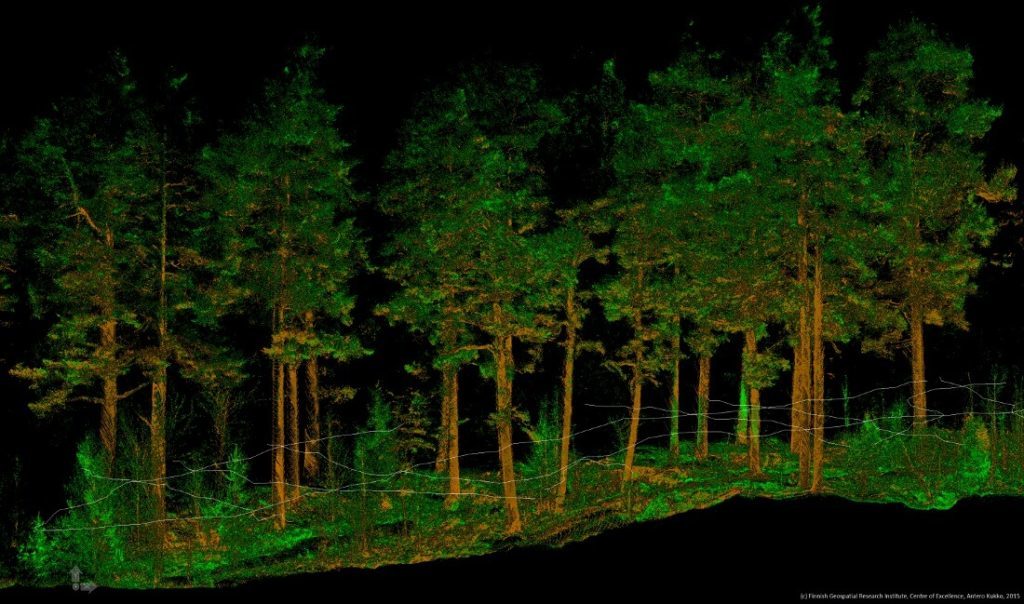Laser scanning research got recognition among the international media in 2016. Our “sleeping trees” findings and advances in mobile laser scanning gained international audiences both in scientific journals and popular news. Two articles by CoE -LaSR researchers were in the top 10 of GIM International magazine’s most read articles 2016, and a Coe – LaSR cooperation article on birch tree’s day-night cycles was listed as one of the 12 best science stories of the year by The New Scientist.
The articles in GIM International brought insight into topics of personal laser scanners (PLS) and unmanned aerial systems (UAS). The main interest and focus was on the development of new scanning systems and potential applications utilizing them in 3D data collection.
First high performance backpack system Akhka in spotlight
GIM readers appreciated Kukko’s, Kaartinen’s and Virtanen’s insights into the advantages of personal laser scanners (PLS) such as Akhka R2 PLS in mapping complex environments presented in the article Laser Scanner in a Backpack – The Evolution towards All-terrain Personal Laser Scanners in GIM International 15/02/2016.

Backpack system allows data acquisition in environments, which have before been hard, or even impossible, to reach with “conventional” wheeled mobile laser scanning systems (MLS).
To our knowledge, the Akhka PLS system has been the first backpack system with such high data acquisition capability. After the publication of this article, an updated revision, AkhkaR3, has been released with even higher performance sensors.
The current possibilities and future opportunities for using new and more cost-effective laser scanning methods were discussed in the article The Current State of the Art in UAS-based Laser Scanning – Airborne Laser Scanning with a UAS by Kukko, Jaakkola and Hyyppä. The article gives an overview of different types of UASs, both current and emerging laser scanners and UAS laser scanning applications.
New research fields for laser scanning for plant dynamics
The New Scientist story ‘Trees seen resting branches while ‘asleep’ for the first time‘ illustrated a novel application of using the high potential of terrestrial laser scanning measurements in the field of chronobiology. The study, a joint international research collaboration with Dr. Eetu Puttonen from NLS FGI and TU Wien, clearly demonstrated circadian movements of silver birch branches and showed for the first time that lidar measurements can detect nocturnal physical changes in trees that resemble a resting or a sleeping pattern.
Above: Overnight movement of a small tree acquired with three different terrestrial laser scanners. Each frame represents the point clouds measured at the shown time with color. The point coloring shows the reflectance of each measured point that were calibrated using an external calibration target. The black point cloud shows the tree’s original posture at sunset.
The results were exciting as they support the use of high resolution terrestrial laser scanning in monitoring plant dynamics with short time intervals and in a non-destructive manner. Additionally, the laser scanning measurements can be scaled up to cover for example several full-grown trees of different species simultaneously with short preparation times.
Read the original research article: Frontiers in Plant Science: Quantification of Overnight Movement of Birch (Betula pendula) Branches and Foliage with Short Interval Terrestrial Laser Scanning
